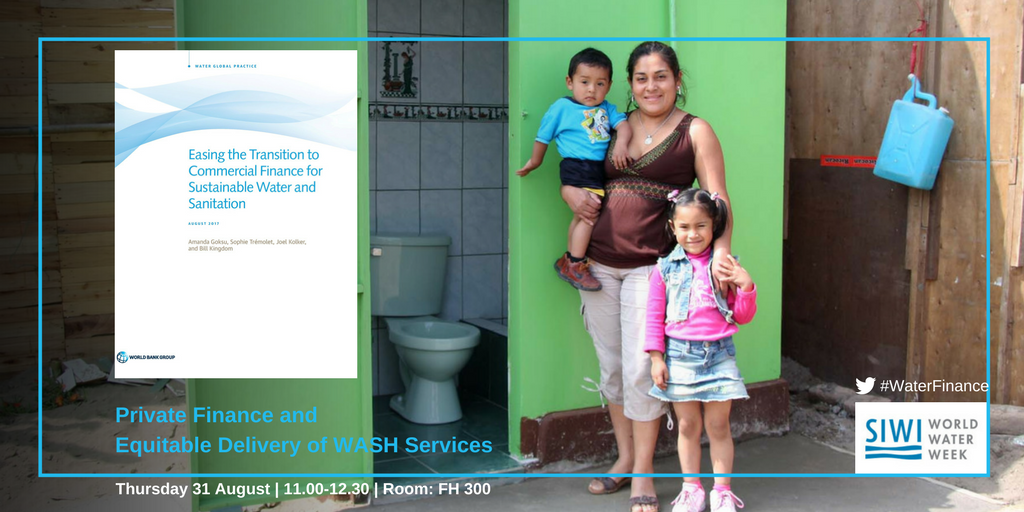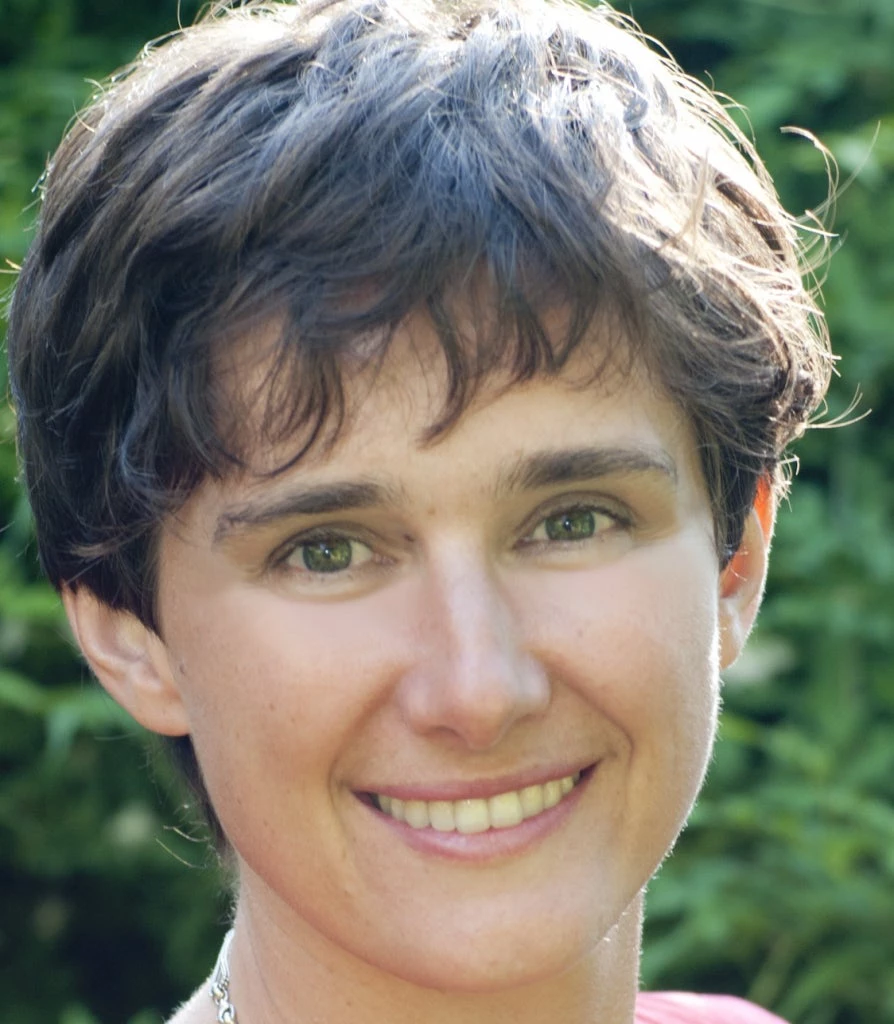To meet the Sustainable Development Goals, governments will need to better target their investments and leverage more financing from private sources, including from households that can afford it (via more realistic and fair tariff policies and incentives to invest in things like toilets) and from commercial finance providers, including microfinance institutions, commercial banks, bond investors or venture capitalists.
A this year’s Stockholm World Water Week, the World Bank is releasing a report which provides guidance to governments and private financiers on “ Easing the Transition to Commercial Finance for Sustainable Water and Sanitation”. This report brings together strands of analysis and key messages that were developed for the High Level Panel on Water and for the Sanitation and Water for All Partnership in the run-up to the 2017 High Level Ministerial Meetings hosted by the World Bank.

for Sustainable Water and Sanitation
Learn more about the session Private Finance and
Equitable Delivery of WASH services at World Water Week.
Taken together, these messages set out a strong case for sector reforms that will help service providers transition to a more mature modus operandi, in which they strive to minimize their costs, receive tariffs that cover a predictable portion of their (more efficient) costs, and borrow a greater portion of their investment requirements from domestic financiers. The good news is that such a way of working does not have to cost more or be detrimental to the poorest customers: in fact, it can be hugely beneficial.
First, commercial finance does not necessarily cost more than concessional finance, once all “hidden” costs are taken into account. Concessional finance usually comes in hard currency; by contrast, domestic commercial finance is in local currency. This removes a risk to the utility: water service providers commonly struggle to manage foreign exchange risk; sharp currency devaluations led to the demise of several high-profile private contracts in the water sector in the 1990s. Even the impact of a creeping devaluation, although less spectacular, can significantly weigh on water service providers’ finances if they are laden with hard currency debt. Modelling undertaken for the report showed that a 3 percent devaluation can add up to 30 percent to the cost of a concessional loan, which could end up being more expensive than a local currency loan subscribed at commercial rates. Other hidden costs include delays in arranging financing, which are typically higher for concessional financing than for commercial financing: during that period, the local currency may devalue further, and more importantly, the social and economic benefits associated with the investment do not materialize.
Second, it’s never a case of either or. To reach the SDGs, a combination of commercial and concessional finance will be needed using blended finance approaches. Finding commercial finance that can generate a return on investment for water service providers that are credit-worthy can free up scarce public funds to target the poorest. The same applies to the use of microfinance for water, sanitation and hygiene (WASH) investments: if the “middle poor” take on loans to finance toilets, subsidies can be moved to the “poorest of the poor” who need the most help.
The need for better targeting public funds is one of the top messages of the World Bank WASH Poverty Diagnostics initiative, with analyzes the linkages between water, sanitation, hygiene, nutrition, health and poverty in great depth in 18 countries. In Tunisia, for example, a detailed analysis of financial flows to the WASH sector conducted using the WHO/GLAAS TrackFin methodology found that national public transfers to government-owned utilities had increased by 70 percent between 2013 and 2015, reaching US$ 93 million per year in 2015, whereas transfers to community-based organizations operating in rural areas were a mere US$ 12 million and no public funds were provided to households to help them invest in on-site sanitation. While water supply service coverage has rapidly increased in Tunisia, reaching 97 percent in 2015, 250,000 people in Tunisia still rely on unimproved drinking water and 900,000 use unimproved sanitation. These mostly reside in rural areas where they either self-provide the services or are served by community-based organizations.
The main priority going forward should therefore be to use scarce public funds for the water sector more wisely. To that end, governments should work on improving the investment climate for water as part of overall financial sector reforms and make the sector attractive for commercial finance providers, by providing guarantees and other de-risking instruments. In the water sector, governments should:
- Define and consistently implement sector financing policies
- Support overall sector reform for corporatization, stronger governance and transparency
- Focus on improving service providers’ efficiency and performance to set them on a course towards credit-worthiness
- Improve the use of public funds and target subsidies where commercial financing would be more challenging.
For more information or to let us know your comments, contact me ( stremolet@worldbank.org) or my colleague Joel Kolker ( jkolker@worldbank.org).


Join the Conversation